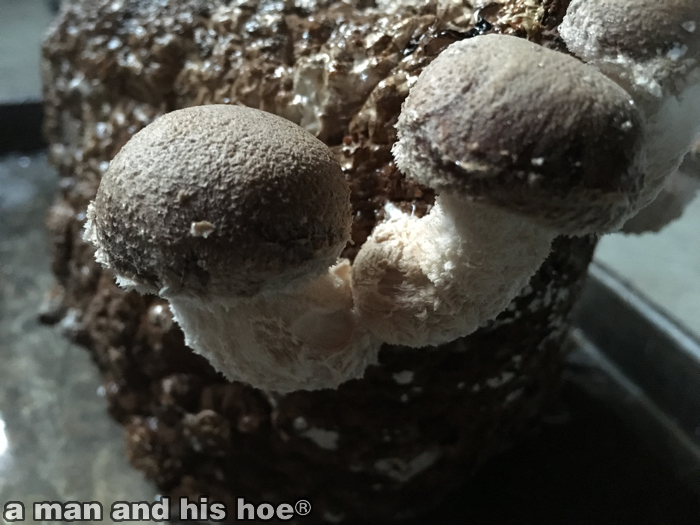Your cart is currently empty!
Category: How Things Grow
-
The First Salmonberry Flower
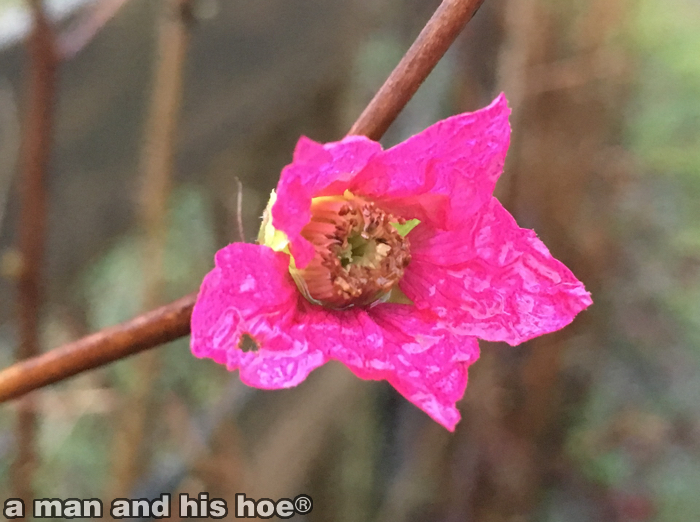
I found a Salmonberry in bloom today. A sure sign that spring is well on its way. It’s a wet, wet, spring. The kale and ruby streaks are so washed with rain, that they can go straight from garden to plate. The cool winter has softened and sweetened the kale that it doesn’t need anything, no dressing, no oil, no salt. It’s delicious just as it is. It’s a perfect compliment to slow roasted rooster.

-
Cherry Blossoms in February
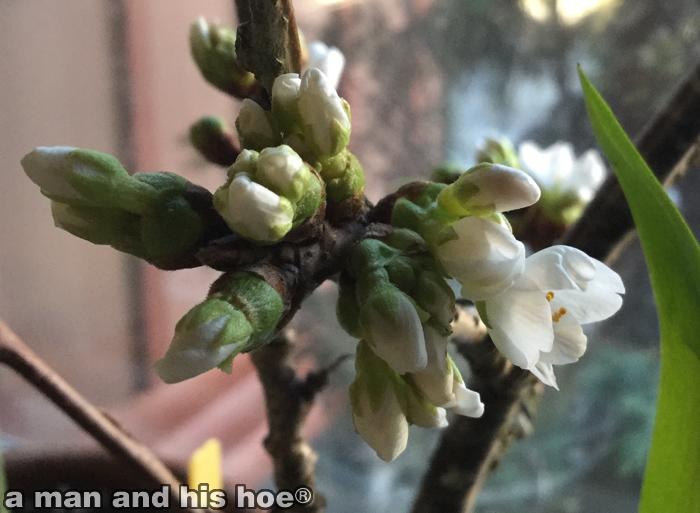
It’s time to prune the cherry, plum, and apple trees. Last week we brought some pruned cherry branches indoors, and today we have cherry blossoms in February.

-
Time to Weed

The hazelnut catkins are in full bloom. The ruby streaks which overwintered are sending up flower stalks too. It is from tiny blossoms like these that many of our foods come.
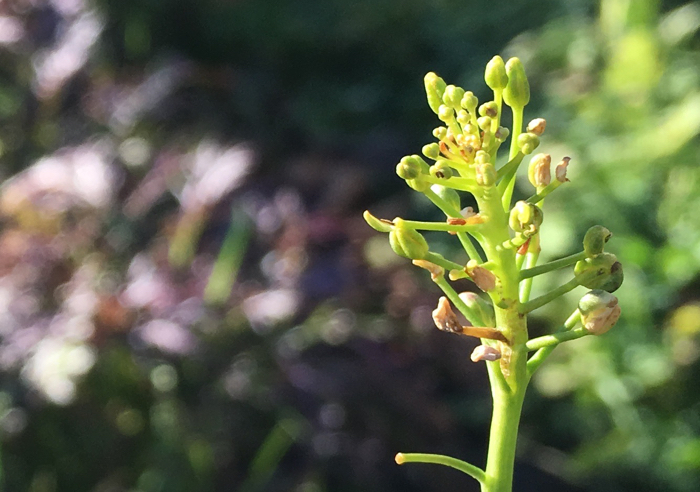
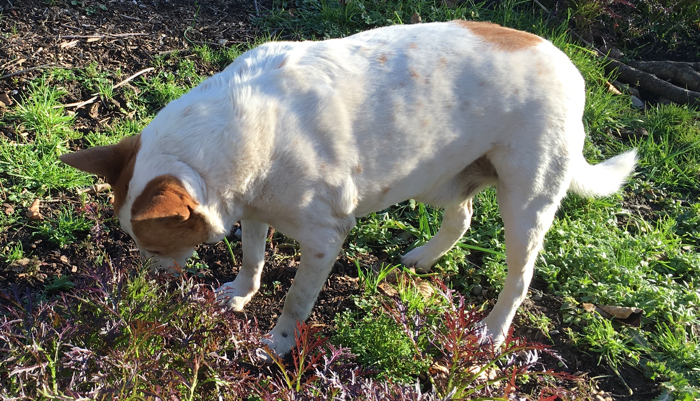
BB has found something interesting in the ruby streaks. If I had a nose like his, I could probably smell how things are growing underground. I could plant seeds and by sniffing, tell when they are about to pop out of the ground.
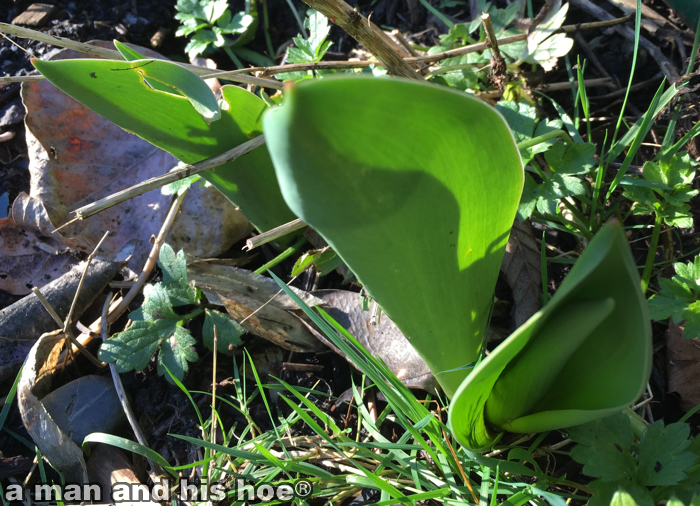
Tulips are shooting out of the ground too. The warm, spring sun is calling them out of the ground. It’s time to get busy weeding and deciding what to plant first, and second, and third, and on and on.
-
A Fresh Feast
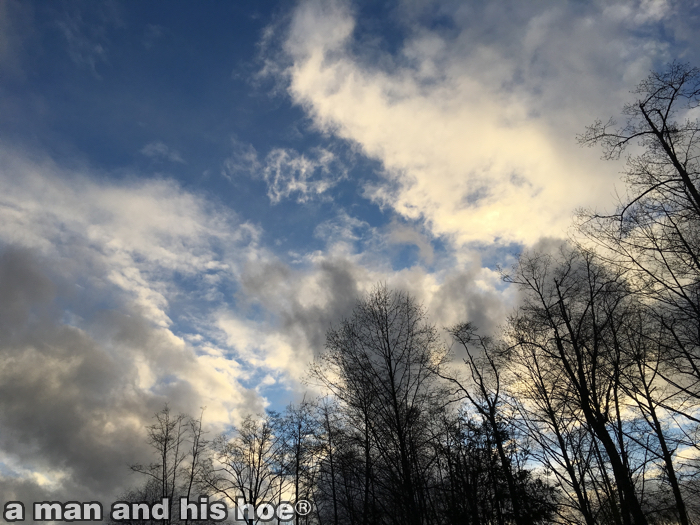
The winter skies are stormy. Look up and clouds swirl about like drunken sailors. Lie on the ground for an hour and watch as grand opera unfolds above the trees. Giants battling. Swords clashing. You can feel their breath on your ears. The epic tales of Homer performed by dancing clouds on a stage that spans the heavens. La Scala has nothing on this. No pesky crowds to deal with either. Every seat a private box. Over there are the Sirens, singing from the rocky shores, luring sailors to their doom. Here comes Orpheus and the Argonauts, doomed to die like countless other hapless sailors … or are they? You see them, don’t you?

Enough with the winter sky. Too much drama for me. Instead, I’m lured by whispering mushroom, shiitake 椎茸 to be exact. Just bumps on a lump of sawdust a week ago, today some are too big to resist plucking. We’ll have a feast tonight. It boggles the mind how fungi turn sawdust into delicacy. Beat this freshness Wholefoods.
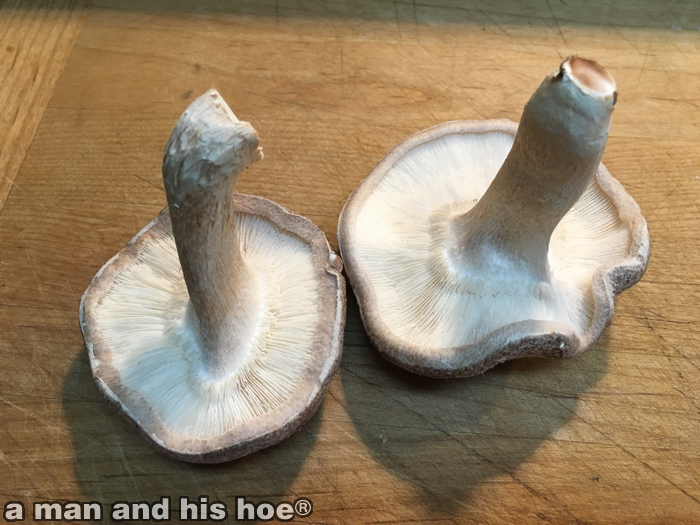

-
Bumps on a Log No More

A week ago I started a shiitake mushroom growing kit by soaking it in water overnight. A few days later bumps appeared on the surface of the block, a pressed block of hardwood sawdust. Seven days on, the bumps have transformed into baby mushrooms over an inch across. A few more days, maybe a week and it looks like we’ll be eating fresh shiitake mushrooms.
It’s always fun watching my food grow. Seeing all the stages it goes through enhances the flavor. I can bite into the food, close my eyes, and appreciate all the work the food went through so I could eat it.
